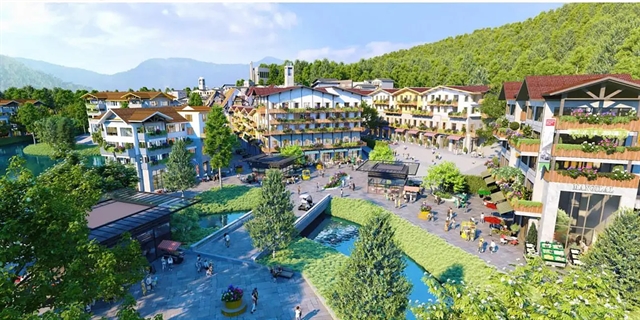 Life & Style
Life & Style

Tourists visiting the northern province of Lai Châu will be greeted with fresh air, beautiful natural scenery and the lively culture of 20 ethnic groups. For those who are interested in exploring historical sites, Emperor Lê Lợi's temple is highly recommended.
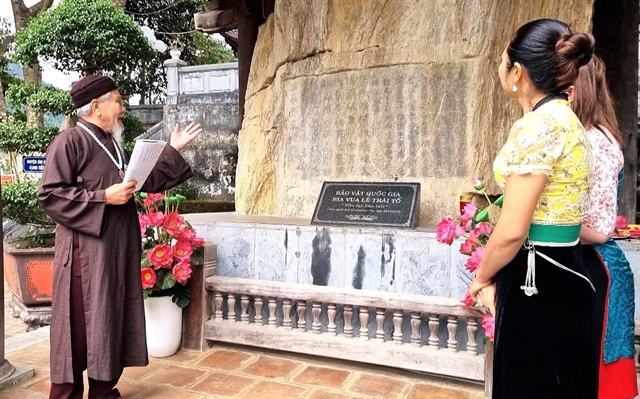
|
| The Emperor Lê Lợi stele was recognised as a national historical relic in 1981 and national treasure at the end of 2016. — VNA/VNS Photo Nguyễn Oanh |
Nguyễn Oanh
Tourists visiting the northern province of Lai Châu will be greeted with fresh air, beautiful natural scenery and the lively culture of 20 ethnic groups. For those who are interested in exploring historical sites, the Temple of Emperor Lê Lợi is highly recommended.
The temple is located 110km southwest of Lai Châu City, in Lê Lợi and Pú Đao communes in Nậm Nhìn District.
The temple was constructed in 2012 to pay tribute to the national hero – Lê Lợi or Emperor Lê Thái Tổ (1385-1433), who led the Lam Sơn uprising against the Ming invaders between 1418 to 1427. It is located on a high location from which visitors can admire the view in four directions. Inside the complex is a precious national relic, the Emperor Lê Lợi stele.
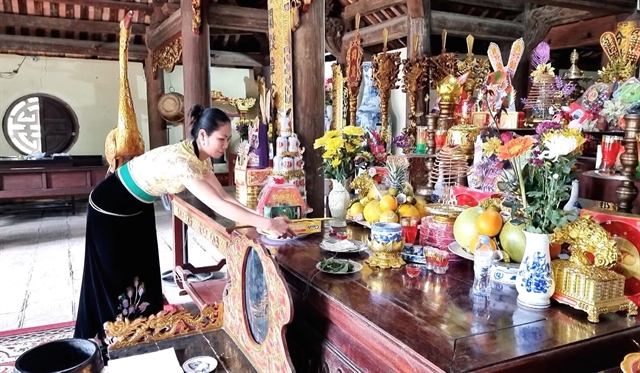
|
| Visitors to the Temple of Emperor Lê Lợi to pay tribute to the national hero and pray for good health and prosperity in the new year. — VNA/VNS Photo Nguyễn Oanh |
The stele was carved from the Pú Huổi Chỏ Cliff on the north bank of the Đà River, as requested by the Emperor in December 1431. It records Lê Lợi's command of his armies to quell the rebellion in the northwest region of the country, to preserve the national victory for eternity.
“The stele engraved with the inscription of Emperor Lê Lợi remains to this day an extremely valuable cultural heritage of the people of Lai Châu,” said Vũ Phong Oanh, a member of the management board of the spiritual site.
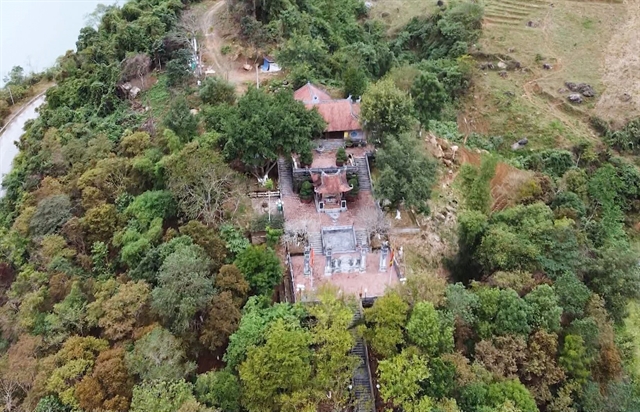
|
| An aerial view of the Temple of Emperor Lê Lợi. — VNA/VNS Photo Nguyễn Oanh |
When the Sơn La hydroelectric power plant was constructed in 2005, the inscription of the Emperor was relocated to avoid being flooded. In 2012, it was moved to within the complex, 500 metres from the former location.
The Lê Lợi Emperor stele was recognised as a national historical relic in 1981 and national treasure at the end of 2016. The temple was also ranked as a national historical relic by the Ministry of Culture, Sports and Tourism in early 2017.
According to historians, the stele is a unique artefact that is completely different from previously discovered items. It contains highly significant historical values and is also considered a cultural masterpiece of the national hero.
Tourist attraction
Today, the Temple of Emperor Lê Lợi has become not only a place for Lai Châu people to remember the national hero but also a venue for local cultural and spiritual activities.
In the early days of the year, many tourists from all over the country visit the historical site to contemplate the national treasure, the Lê Lợi stele, and to learn about the Emperor, who was a smart and talented military leader in Việt Nam’s history. Visitors also wish for good health and prosperity in the new year.
“I was deeply impressed with the masterpiece of the past and am also proud of the merits of our ancestors. The temple is surrounded by peaceful natural scenery and a spectacular view which took my breath away,” said Nguyễn Phương Hoa, a tourist from Hà Nội.
In recent years, local authorities have arranged tours to the historical complex and nearby villages to attract more visitors. Participants of the tours, after paying a visit to Emperor Lê Lợi Complex, can explore the cultures of the local ethnic groups living by the hydropower reservoir.

|
| From the Temple of Emperor Lê Lợi, tourists can visit nearby villages by boat. — VNA/VNS Nguyễn Oanh |
The construction of the Lai Châu hydropower plant has brought people there a new source of living. Sailing from towards Chang Village, Lê Lợi Commune, tourists can see villagers fishing with huge cages or harvesting nets full of fish.
Many traditional festivals have also been restored as the living standard has been improved, such as the swallowtail boat racing festival and the Temple of Emperor Lê Lợi Festival at the beginning of the year.
Thai people in Chang Village still retain their cultural identity, which can be seen by the stilt houses with stone roofs, xòe dances and traditional cuisine that every tourist must try.
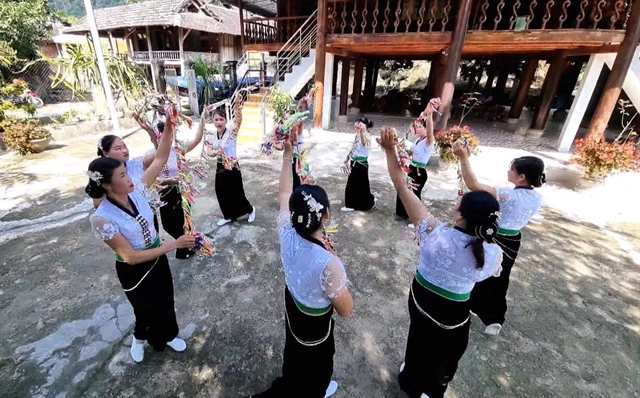
|
| Thai women in Chang Village perform their traditional xòe dance. — VNA/VNS Photo Nguyễn Oanh |
From Temple of Emperor Lê Lợi, tourists can also visit another historical destination – ruins of King Đèo Văn Long's palace (1887-1975), governor of Lai Châu Province, who used to rule 12 Thai lands.
According to Mào Việt Hoa, chairman of the People's Committee of Lê Lợi Commune, the preservation of the Thai traditional dances, games and dishes have been strongly promoted within the locality as unique treats for tourists from all over the country.
“The commune focuses on upholding cultural values associated with tourism development, connecting more community cultural tourist sites with the Temple of Emperor Lê Lợi Complex, to create more attractive tours,” he added. — VNS




